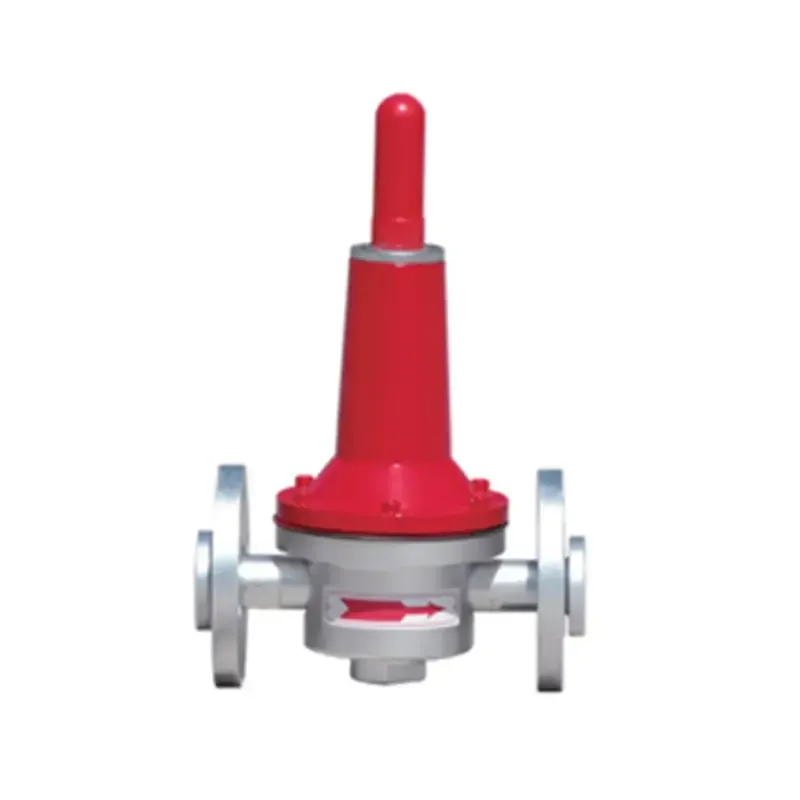
Dec . 17, 2024 14:19
Back to list
منظم ضغط الغاز
Understanding Gas Pressure Regulators
Gas pressure regulators play a crucial role in various applications, ranging from domestic appliances to industrial processes. Their primary function is to control and maintain the pressure of gas supplied to a system, ensuring safety, efficiency, and optimal performance. This article delves into the workings of gas pressure regulators, their types, and their importance in everyday life.
How Gas Pressure Regulators Work
At their core, gas pressure regulators are mechanical devices that reduce the pressure of gas from a source, such as a gas cylinder or pipeline, to a desired level for use in appliances or processes. The regulation of pressure is essential because gas is often stored at high pressures, which can be dangerous if not properly controlled. Regulators convert high-pressure gas into a lower, stable pressure that can be safely used.
The basic components of a gas pressure regulator include an inlet, a diaphragm, and an outlet. The gas enters the regulator through the inlet, and as the pressure builds up, it acts on the diaphragm. This diaphragm moves in response to changes in pressure, controlling the gas flow to the outlet. A spring mechanism is often used to adjust the desired downstream pressure, providing a balance that allows for consistent delivery of gas.
Types of Gas Pressure Regulators
There are several types of gas pressure regulators, each designed for specific applications
.
2. Single-Stage Regulators These are simpler devices that reduce the pressure in one step. While they are suitable for many applications, they may not provide the same level of stability as two-stage regulators, especially under fluctuating inlet pressures.
منظم ضغط الغاز

3. Low-Pressure Regulators Designed for use in applications that require lower outlet pressures, these regulators are commonly found in residential gas systems, such as those used for heating and cooking.
4. High-Pressure Regulators Conversely, high-pressure regulators are used in industrial applications where high pressure is necessary for operation. These are typically found in settings like laboratories or manufacturing plants.
5. Relief Valve Regulators These regulators are equipped with a relief valve to vent excess pressure, thereby providing additional safety.
The Importance of Gas Pressure Regulators
The significance of gas pressure regulators cannot be overstated. They enhance safety by preventing the risks associated with high-pressure gas systems, such as leaks, explosions, and equipment damage. By maintaining proper pressure levels, they also contribute to the efficient operation of appliances, reducing energy waste and prolonging equipment lifespan.
In addition, gas pressure regulators are essential in various industries, including healthcare, where they are crucial for regulating medical gases used in treatments and surgeries. They are also vital in the food and beverage sector, where precise gas control is necessary for processes like carbonation in soft drinks.
Conclusion
In summary, gas pressure regulators are indispensable components in many applications that involve the use of gas. Their ability to maintain safe, stable pressure levels ensures that systems operate efficiently and effectively. Understanding the different types of regulators and their specific applications can help users select the right regulator for their needs, ultimately enhancing safety and performance in gas-utilizing operations. As technology advances, the design and functionality of gas pressure regulators continue to evolve, paving the way for even more efficient and safer applications in the future.
Latest news
-
Safety Valve Spring-Loaded Design Overpressure ProtectionNewsJul.25,2025
-
Precision Voltage Regulator AC5 Accuracy Grade PerformanceNewsJul.25,2025
-
Natural Gas Pressure Regulating Skid Industrial Pipeline ApplicationsNewsJul.25,2025
-
Natural Gas Filter Stainless Steel Mesh Element DesignNewsJul.25,2025
-
Gas Pressure Regulator Valve Direct-Acting Spring-Loaded DesignNewsJul.25,2025
-
Decompression Equipment Multi-Stage Heat Exchange System DesignNewsJul.25,2025

